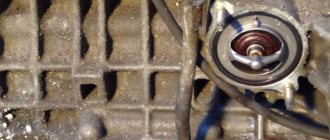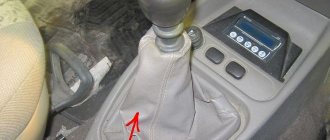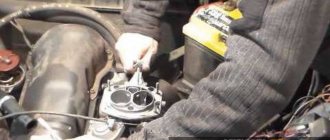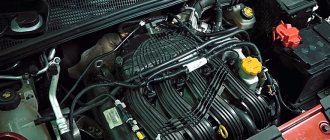Lada Kalina is equipped with an engine cooling system that prevents it from overheating. And this car has a standard ODS, no different from other devices of this type. This is a closed circulation of liquids from heating elements to the “point” of heat energy release. Many car owners are aware of the need to monitor the condition in which the car’s power unit is.
The cooling system is one of the main automotive systems of a car. And since it is so important, malfunctions in it are unacceptable. A properly functioning ODS is a necessity for the safe operation of any car, and the Lada Kalina is no exception. In a situation of system failure, overheating of the motor is inevitable. Extremely high temperatures can cause it to break. Besides, it's not safe. Not to mention the quality of work: it becomes less efficient.
For the reliable and efficient operation of the above-mentioned set of elements, it is required that they all act harmoniously.
Cooling system Lada Kalina: features
The operating temperature of the Kalina engine is up to 103°.
If the temperature is higher, the engine overheats, which means that the driver and his car will face serious troubles: head deflection or (even more depressingly) water hammer.
Overheating of the motor is possible in a situation where one or another cooling element fails. At first, a light phase begins - during which the engine begins to boil.
The consequences may be even more severe. They are characterized by deformation and deflection of the cylinder head. In this case, the situation can be corrected by simply grinding the surface of the latter.
The middle phase is characterized by deformation of engine parts of the same valve mechanism. In the future, the above-mentioned part will require serious repairs: after all, repairing the cylinder head is quite a financially expensive matter.
The heavy phase represents destruction from the strong heat flow of the piston group. Still, this defect is not the worst thing you can expect. But if coolant gets into the car cylinders, the power unit of your car will quite naturally suffer a water hammer. And then a major overhaul may not help.
What are the consequences of engine overheating?
As a rule, the consequences of engine overheating depend on the efficiency of the motorist. The less the power unit operates in a dangerous mode, the lower the likelihood of damage to its units. For example, if the engine has been running in overheating mode for up to ten minutes, then you should not expect any serious problems - the engine and its components must withstand the effects of elevated temperatures with dignity. The worst that can happen is a slight melting of the piston surface. If, during the process of overheating, smoke poured out from under the hood, then it is better to show the car to a mechanic. In the case where the engine has been running under overheating conditions for about twenty minutes, the consequences can be more serious. The most common malfunctions in this case are the appearance of cracks in the cylinder head, its curvature, burnout of the gasket between the cylinder head and the block itself, damage to the seals, defects in the inter-ring partitions, and so on.
Note! That severe overheating can lead to catastrophic consequences - it is tantamount to a “heart attack.” Failures can begin directly from the combustion chamber and completely immobilize the power unit.
The piston system begins to melt, and traces of burnout appear. Melted aluminum sticks to the cylinder walls and further complicates engine operation. High temperatures lead to severe overheating of the oil. The result is the loss of all its lubricating characteristics and failure of rubbing parts. The connecting rod and main bearings begin to stick to the crankshaft, which also melt under high temperatures. And the crankshaft itself may not hold up and fall apart into several parts. The worst that can happen is that the connecting rod breaks through the wall of the cylinder block. Then you can put a “cross” on the engine.
Functional range of elements of a car cooling system
The standard cooling system consists of the following elements:
- sensors – determine t° in certain auto mechanisms; one of the management elements of the system;
- pump – makes it possible to circulate liquid in the SOD; operates in a forced mode;
- pipes – coolant moves through them;
- expansion tank - compensates for the volume of antifreeze, since due to temperature fluctuations it narrows and expands;
- radiator - a device that discharges excess heat into the environment;
- fan – activates the cooling process by forcing air; With its help, the cooling intensity increases;
- Thermostat - although small, is a very important element that regulates the amount of antifreeze; provides a “comfortable” temperature regime throughout the entire system.
Operating principle
The cooling system operates in a self-regulating mode, which is aimed at maintaining optimal temperature in the power unit. If the oil temperature rises significantly, the system does everything to ensure that the temperature inside the engine decreases.
Thus, with the close interaction of the above elements, the system functions. It automatically sets the necessary conditions for the inclusion and operation of structural parts, which ensures effective cooling of the power unit.
Why does the engine get hot from the inside?
Washed engine
The consequences of external engine overheating are not as serious as internal ones, since the temperature sensor on the dashboard will definitely report the problem. You saw that the arrow crossed the acceptable mark and took action. With overheating from the inside, everything is much more complicated; most often it leads to serious problems.
During vehicle operation, sediment accumulates in certain engine parts, resulting from the use of low-quality fuel or oil. For this reason, the engine is usually overhauled and cleaned after a certain mileage. The sediment collects mainly in the cylinder head. If the engine is not cleaned in time, the sediment will form a seal with poor thermal conductivity. In this case, the antifreeze circulation circuits are blocked, the coolant loses its effectiveness, and the thermostat fails. As a result, the engine heats up, although you don’t notice it.
Circuits blocked by sediment increase the likelihood of cooling coating cavitation. Cavitation is the process of damage to the metal shell of the engine, which most often becomes the cause of its detonation. Often mechanics may confuse cavitation with corrosion, but they are not the same thing.
The fundamental factor in internal engine overheating is burning out of the compartments in the cylinder block. In this case, a dense layer of deposits forms in the compartments, which creates the effect of thermal insulation. Typically, such problems arise in domestic cars with high mileage, that is, the engine begins to eat up more oil. As a result, the motor consumes only some of the resulting lubricant, and the rest forms seals. As the mileage increases, the engine overheats more and more, and the car owner does not even notice this, since the temperature indicator on the instrument panel is within the normal range.
One of the most destructive factors contributing to engine overheating is the regular use of additives. They often cause the formation of a dense metal-ceramic layer on the surface of the pistons. This coating has extremely low thermal conductivity. The presence of this factor alone already guarantees engine detonation.
Return to contents
Possible malfunctions of the ODS, diagnostics
Almost always, a breakdown of the cooling function of a car is caused by an antifreeze leak. You should inspect the car under the hood for possible leaks. The cause of the leak may be:
- or a leaky clamp;
- or a radiator failure.
Then in the first case the element is replaced; this is not difficult and does not take long. As for the radiator, it is better to have it repaired. There are also no particular difficulties here: often you just need to solder the holes.
The reasons for overheating of this car can also be:
- thermostat. Its suitability is checked using both pipes: the temperature of the latter should not be sharply different (this is determined on a warm engine). Otherwise, the thermostat is faulty and antifreeze circulates in a small circle;
- clogging of radiator honeycombs. You can solve the problem by cleaning the outside of this element. Often this is not always easy to do, but there are no other methods other than manually cleaning the honeycombs;
- Fan malfunction. When the heating level of the coolant increases, this part should begin to operate. If this does not happen, check the relay, wiring or t° sensor;
- air in the coolant system. Lada Kalina is not insured, among other things, against the so-called air lock inside the system. In general, previous types of breakdowns are eliminated quite quickly and almost everything is clear with them. In the latter case, it is necessary to understand in more detail. The question - how to remove air from the Kalina cooling system - is really very important for the optimal functioning of the totality of the elements of this car.
Airlock
If the cooling system becomes airy, you need to do the following: with the expansion tank cap open, start the power unit, squeezing the gas pedal from time to time, warm it up until the t° sensor “reaches” the red scale. After “starting” the ventilation device, “add up the gas” a little more and then you can turn off the ignition.
If the cooling system is still leaking air and the above measures have not led to anything, you should act more radically. What needs to be done to remove air from the cooling system?
First, remove the power motor screen (dismantling is done in an upward direction).
Loosen the clamp with a screwdriver and remove one of the tubes from the heating fitting of the throttle assembly.
Unscrew the cap of the expansion tank. Cover the neck of the opened container with a clean piece of cloth. Now blow into the tank: coolant should flow from the tube that was removed. If you fail to break through the above container, close the lid and place the tube in its place.
Next, warm up the engine again and turn off the ignition. Then the tube must be removed again, without removing the lid from the tank, and wait until the antifreeze flows.
Since this liquid is very poisonous and dangerous for people, drain the coolant with extreme caution. Remember about safety: get rubber gloves. Monitor the temperature of the tubes. Keep in mind that you only need to drain the coolant when the engine has cooled down.
Now the tube is put on the fitting, the clamps are tightened. At this stage, the problem of how to remove air from the cooling system of the car has been successfully solved. As you can see, it is possible to eliminate faults in the ODS without the participation of professionals.
Checking and repairing the Kalina engine cooling system
| The heater does not heat well, the coolant level drops below the MIN mark each time, the engine temperature does not rise to operating temperature, or the engine overheats? The causes of all these ailments are improper operation of the engine cooling system (ECS). We learn to identify and eliminate the causes of poor performance of the LADA Kalina SOD. |
Diagnostics of the LADA Kalina engine cooling system
When operating a vehicle, the technical condition of the cooling system can be assessed by looking at the coolant temperature gauge and the fluid level in the expansion tank. A decrease in coolant level is usually caused by a leak in the system. Some cars have a coolant level sensor installed. When the level drops to the MIN mark, the corresponding indicator lamp in the display unit of the on-board monitoring system lights up.
| 1. Checking the coolant level in the expansion tank. The liquid level should be 25 - 30 mm above the MIN mark on the expansion tank body. If the fluid level is at the MIN mark or below, add coolant to the reservoir |
Warning!
The coolant level should be checked on a cold engine. A slight increase or decrease in the coolant level during heating and cooling of the engine is not a malfunction. This is due to the thermal change in the volume of the liquid.
If you have to regularly add coolant, you should check the tightness of the cooling system.
2. Check the tightness of hoses and connections of the cooling system. Inspect the engine compartment and pay attention to the condition and tightness:
- Expansion tank hoses;
- Radiator drain holes and hoses;
- Heater radiator hoses;
- Engine cylinder block;
- Places for installing temperature sensors;
- Thermostat hoses.
3. Checking the integrity of the engine cooling system elements.
- Expansion tank housing;
- Engine radiator;
- Heater radiator;
- Connections between the coolant pump (pump) and the cylinder block. We also check that there is no leakage of liquid from the drainage hole of the pump (located at the bottom of the pump), indicating wear of its seal.
There should be no coolant leaks anywhere.
| 4. Checking the thermostat. We control the coolant temperature using the indicator on the instrument panel, and the circulation of the liquid in small and large circles by touch, by changes in the temperature of the hoses and pipes of the cooling system (in the photo the air filter is removed for clarity). |
Comment
If the engine cooling system is working properly, then when the coolant temperature is less than 90 ° C, the main thermostat valve should be closed and the coolant should circulate in a small circle. As a result, the lower radiator hose and the radiator itself will be noticeably cooler than the thermostat housing, through which hot coolant circulates. When the coolant temperature reaches about 90 °C, the main thermostat valve will open and a gradually increasing flow of hot liquid will begin to flow into the radiator. In this case, first the radiator and then its lower hose will begin to heat up.
Once the temperature reaches 102 °C, the main thermostat valve will fully open and all fluid flow will circulate through the radiator. In this case, the radiator will become hot in the upper zone and slightly cooler in the lower zone.
We leave the engine running until the engine radiator fan operates. When the coolant temperature rises to the point where the temperature gauge needle approaches the red zone, the electric fan should turn on, and when the temperature drops, it should automatically turn off.
Comment
If the electric fan does not turn on in time, the liquid boils, it is necessary to check the serviceability of the fan electric motor or the serviceability of the engine control system.
Malfunctions of the engine cooling system and how to eliminate them
| Cause of malfunction | Remedy |
| The engine gets very hot | |
| Reduced coolant level in the radiator | Add coolant |
| Thermostat valve stuck closed | Thermostat is faulty, replace. |
| Poor circulation of coolant in the system | Replacing the pump (coolant pump) |
| The radiator is clogged with insects and dirt | Cleaning the engine radiator from the outside |
| Radiator tubes, hoses and engine cooling jacket are clogged with scale and silty deposits | Flush the engine cooling system and add fresh coolant |
| The electric fan does not turn on due to a broken electrical circuit, failure of the temperature sensor, fuses, additional resistance, relay or fan motor | Check and restore electrical circuits. If necessary, replace the fuses, resistor, relay or electric fan assembly |
| Damage to the plug in the expansion tank cap (constantly open, causing the system to be under atmospheric pressure) | Replace the expansion tank cap |
| The engine overheats and cold air blows from the heater | |
| Excessively low coolant level due to a leak or damage to the cylinder head gasket, causing vapor locks to form in the engine water jacket | Repair coolant leak. Replace the damaged cylinder head gasket. |
| The engine does not warm up to operating temperature for a long time, the thermal regime is not stable while driving | |
| Thermostat valve stuck closed | Thermostat is faulty, replace. |
| Constant decrease in coolant level in the expansion tank | |
| Radiator leaking | Repair or replace radiator |
| Heater radiator leaking | Repair or replace heater core |
| Expansion tank leaking | Replace expansion tank |
| Coolant leakage through leaky connections of hoses and pipes | Replace the hose and pipe clamps |
| Damaged water pump seal | Replace the pump |
| The cylinder head bolts are not tightened sufficiently (on a cold engine during long-term parking, a coolant leak appears through the joint between the cylinder head and the cylinder block, in addition, traces of coolant may appear in the engine compartment) | Tighten the cylinder head bolts to the required torque. |
A more detailed design of the engine cooling system is discussed in a separate article. Keywords:
FakeHeader
Comments 29
up to 106 in the heat 32 uphill with air conditioning, and 85
K2 automatic transmission wife's car
You are so cute))) I don’t even know what to suggest











